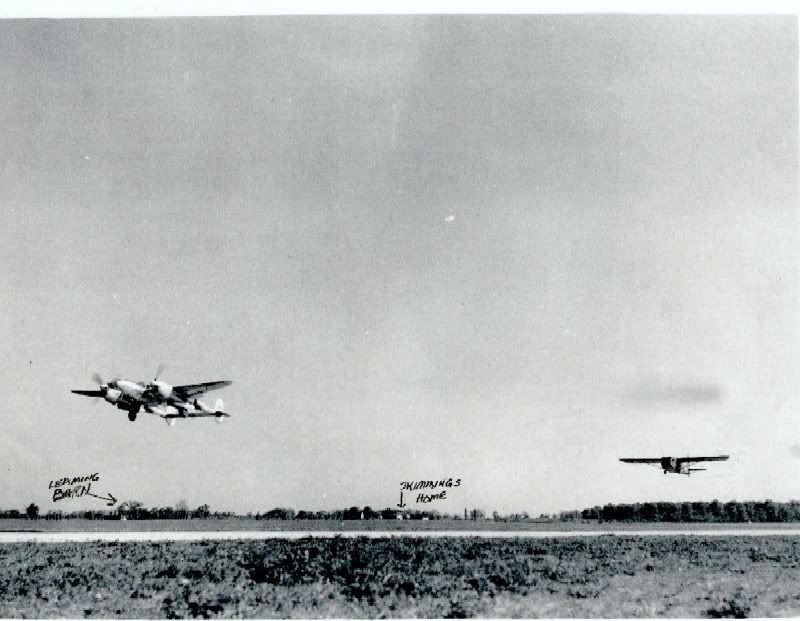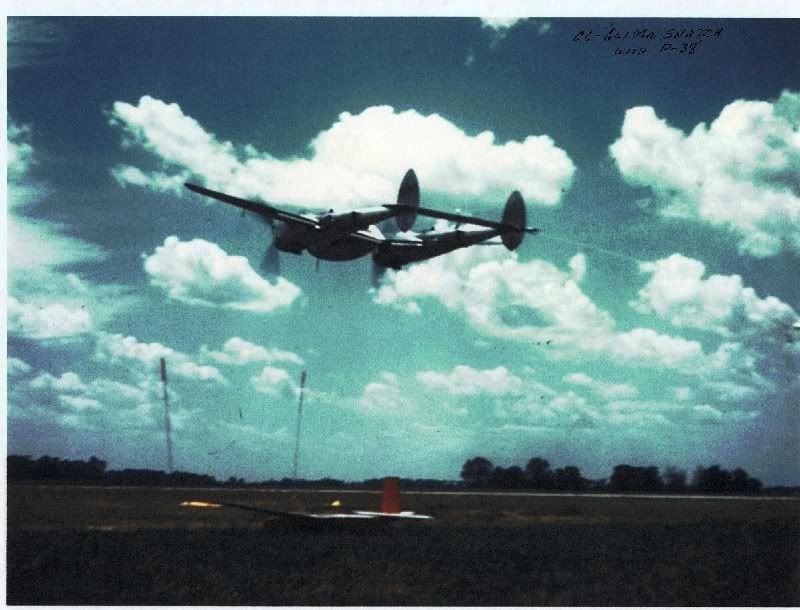Gen. Cardenas was kind enough to allow me to share the two photos he sent to me. In one, you can clearly see that he is towing a CG-4A. In the other, there is a much smaller glider sitting near the point where he is making the snatch, so maybe that's from a different experiment. Anyway, this is what he relayed to me:
"Have attached a couple of pictures that are definitely not known. My boss General Fred R, Dent was in charge of glider development for WWII. WE established a special base for that in Wilmington Ohio at Clinton County airport. I was in charge of developing the best tow plane for the invasion Gliders. I proved that the P-38 was the living best. Then one day a couple of civilians in grey flannel suits established a requirement to snatch a glider or human from the ground with minimum equipment required.
Attached are pictures of me snatching a CG-4A with a P-38 and the towing it all the way to a base in Florida. Have no idea what it was for and did not ask."
He later followed up with this info:
"The reason why thew P-38 was the best towplane was that first & formost they had the power to tow three at the same time. Secondly the glider plugs were on the inside end of each boom. A cable connected each plug and the tow rope of the gliders rode on a pulley that was free to ride anywhere on the cable therby offsetting any side force by a glider. Thirdly was the counter rotating props on the P-38. All of this made for a straight tow down the runway.
Finally when you release the Gliders you have eight 50's in the wings to clear a path for the glider. I proved this but they cost too much and we did not have too many so we were stuck with the C-47 at the cost of many glider crews lives. Sad."







